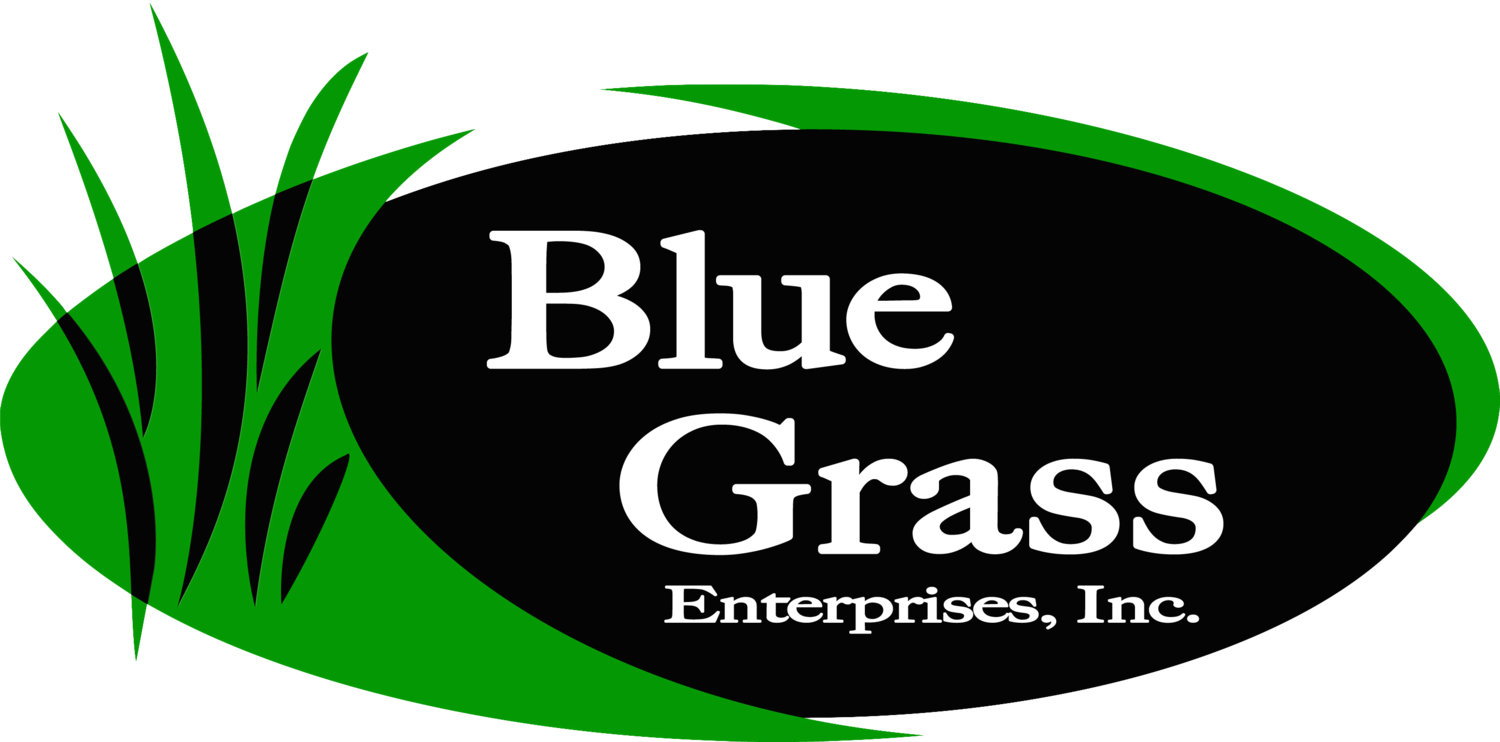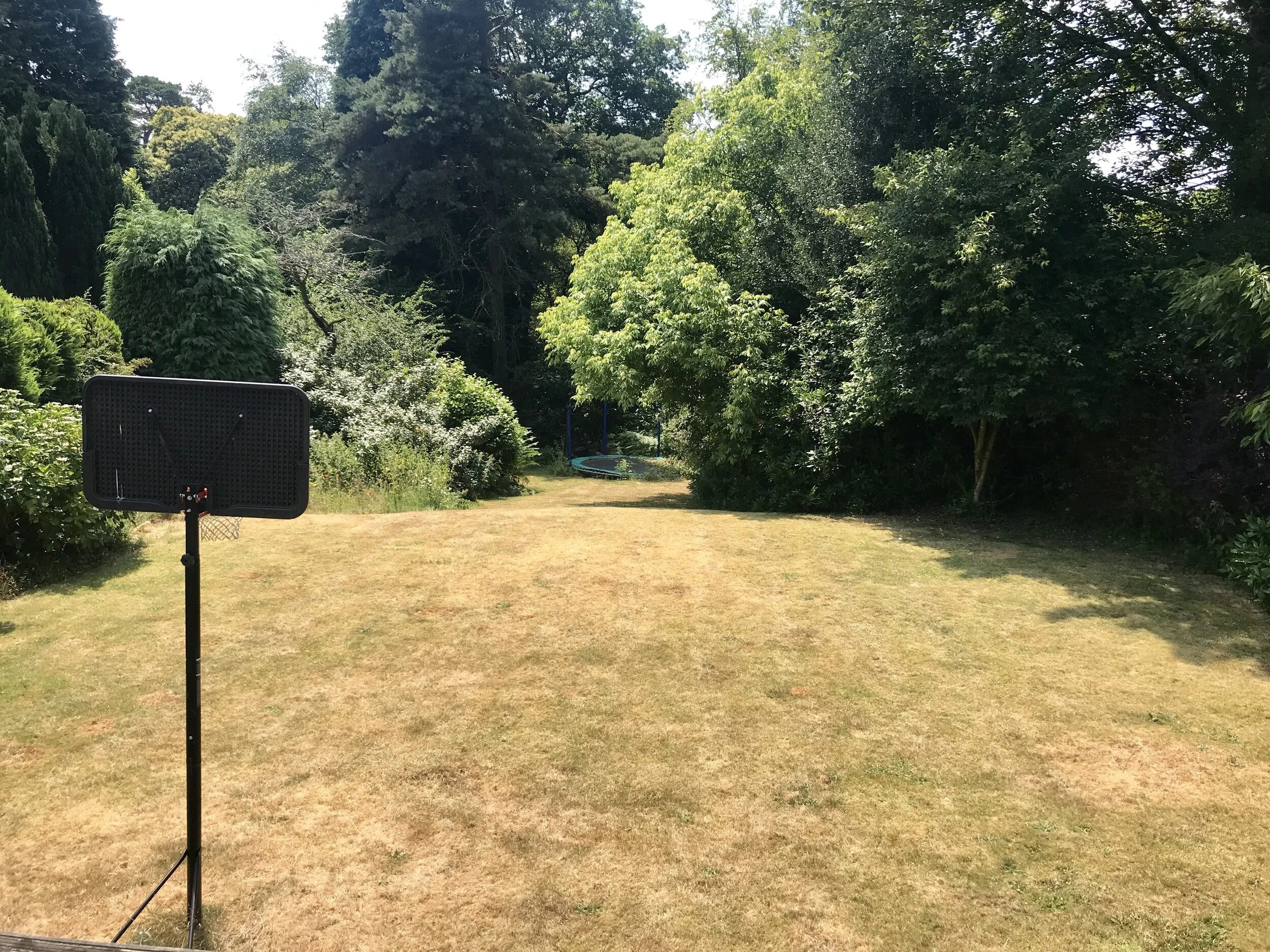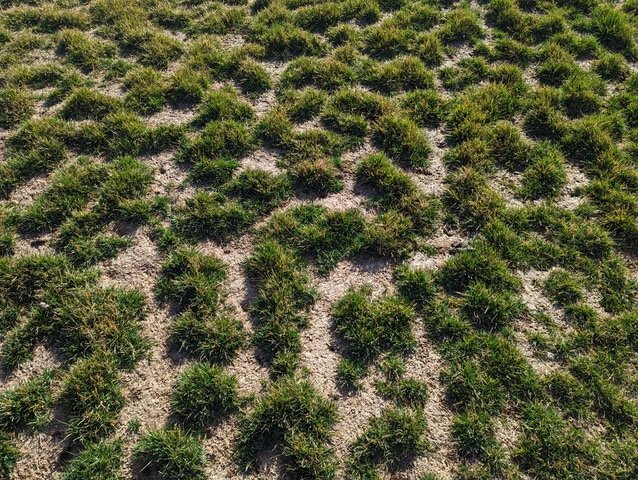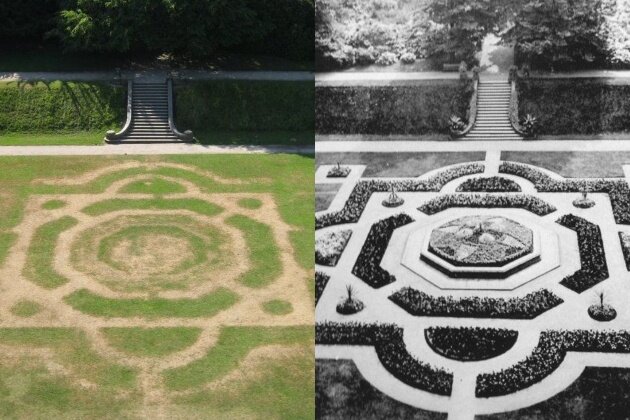This Drought has done a real number on my lawn. What should I do to help it come back?!
First off, you are not alone. We have been fielding lots of “Lawn SOS” phone calls due to the extreme drought conditions of the last several months. In fact, we are now in week 194 of deficit precipitation according to a recent YouTube video from one of our favorite climatologists, Eric Snodgrass. But I digress…
Many lawns have sustained damage that looks like this photo labeled “Drought Damage”. This type of damage is also commonly called sun scorch. In essence, the plants are essentially burning in the sun because they have been deprived of water and subjected to extreme heat. These areas will be especially noticeable in areas close to reflected heat (around foundations, driveways, sidewalks, and parking lots) and in places that are more compacted due to heavier foot traffic.
Drought Damage
(with additional stress from compaction around the base of the basketball pole)
First off, let’s all collectively say a little prayer for a return of some nice, consistent, soaking rains.
Next, let’s talk silver linings: Look closely around the base of the basketball pole in the photo above. Do you see how much worse the damage is in that area? This is because the compacted soils underneath the hoop (and where the majority of the play is happening) are causing those plants to have shorter root systems than the plants outside that main area. Compacted soils inhibit a plant’s ability to pull any moisture from deeper soil profiles in stressful times. NOW is the time to take a walk around your property and look really closely at the areas that are stressing the most. Then, this fall when you core aerate, make sure to be extra aggressive in those areas to encourage future root development and ensure that your lawn does better in droughts in the future. Read more about the benefits of aeration here.
Let’s talk recovery: if you have drought damage in your lawn, you can repair it with light, frequent applications of 13-13-13 before rain or heavy irrigation. These feedings can occur as often as every two weeks until the lawn is looking green and lush again.
Common question alert: “Should I overseed?”
Maybe this should say “Grasses, uh, find a way”? (Especially with access to high quality food like 13-13-13.)
Typically speaking, we do not recommend overseeding areas that are suffering from drought damage. Read more about our thoughts on overseeding here.
Can you overseed? Yes. But to paraphrase Ian Malcolm from the best movie ever created, “Just because we can do something, it doesn’t mean that we should.”
This image is a great example of what “old” drought damage often looks like once precipitation starts up again. This photo is a great example of a space that would be best treated with aeration and food, rather than overseeding
That said, in cases of extreme drought, it might be prudent to consider a late summer overseeding to help the lawn recover faster. If you are considering this option, please contact our office and be prepared to email photos of the damaged areas so we can better ascertain if overseeding really is the best path forward for you. Generally speaking, it isn’t necessary. But that doesn’t mean there aren’t extreme cases that might benefit from the practice.
That said, there are many details to bear in mind if you are considering an overseeding (such as what crabgrass preemergent was applied and when), so be sure to give us a call to talk through what your best options might be. 319-842-2165
Once we help you determine if overseeding is a reasonable option given the situation in your lawn. We can talk you through the basic steps you need to know. More information about overseeding techniques can be found here.
Better question alert: “What can I do to strengthen my lawn’s ability to survive stressful times in the future?”
Excellent question! We need to talk about cultural practices with lawns. Here are some pro tips:
Stop. Mowing. Your. Lawn. When. It. Is. Hot. Outside. As a general rule, cool-season grasses like Kentucky Bluegrass or Rye grasses like to be left alone when the temperature is higher than 85 degrees. This is especially important when there are not consistent rains. It is better to let your lawn get long than to dehydrate it further by cutting the blade in a time of drought. For more information on best mowing practices, read here.
Don’t fertilize your lawn in extreme heat. If the temperatures are higher than 85 degrees, your lawn doesn’t want to put a lot of energy into growing anyway. Give your plants (and yourself) a break in the peak of summer. Note: With our summers getting hotter and our consistent rains moving to the spring and fall, it is increasingly difficult to find ideal windows to apply a summer fertilizer. This is another reason why we redesigned our 4-Step Programs - to avoid summer feedings.
Do a soil sample so that we can determine what products would most benefit the overall health of your plants.
Core aerate your lawn at least once a year. Growing up, core aeration was not nearly as common of a practice as it is now. I would often hear people would often talk about the “freeze, thaw cycle” that would naturally aerate lawns. We now know that the freeze, thaw cycle really isn’t enough to promote peak health in our lawns, especially in heavy foot-traffic areas like gate entrances and commonly walked paths to the shed and back. Soil compaction leads to shallow root systems that cannot access moisture from lower soil profiles. The photo below is from the UK a few years ago in an extreme drought. I pulled it from an article that highlighted that their extreme heat was revealing historical sites all over the country that showed where structures used to be (and where the compaction still rests in the soil). Photos like this are a great example of how soil compaction can impact lawns, even decades later, even with consistent freeze-thaw cycles.
Use your irrigation wisely throughout the entire growing season. Do NOT water your established lawn every day during the year. By doing this, you are encouraging the plants to rely on surface water, rather than putting down long roots to survive extreme conditions. It is better to water your lawn less often, but very deeply, than to water a little bit each day.
Once the drought breaks, you can do some TLC on the lawn with 13-13-13. One of the best ways to ensure a speedy recovery is to do light applications every 2-3 weeks with 13-13-13 before a rain or irrigation event. In most cases, two or three feedings with this strategy will bring a lawn back to a happy lush environment.
If you have dogs who were also during urine damage during the drought, consider putting down gypsum as well!
Surprise! This homeowner in the UK discovered in an extreme drought that there used to be an intricate garden in their backyard. This is a good example of why addressing compaction issues is vital to the longterm success of green spaces.





